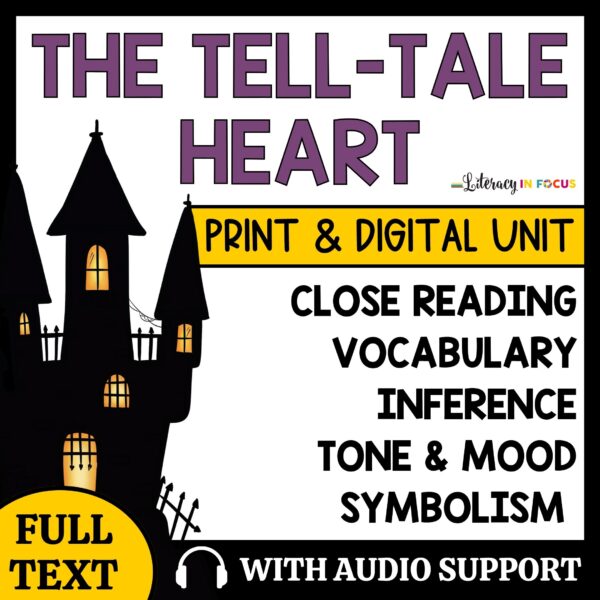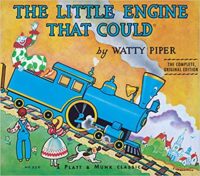Should tone and mood be taught at the same time? I think it depends. If both literary devices are new to upper elementary and middle school students, it’s probably better to have a dedicated lesson for each one. If it’s not a new concept, I think combining tone and mood into one lesson will work. What do you think? Do you teach tone and mood together or separate?

How to Teach Mood in Upper Elementary and Middle School
The lesson plan and activities described in the post below are focused on teaching mood at the upper elementary and middle school level. I’ll share specific activities for teaching tone in another post.
What is mood in literature?
When explaining the meaning of mood to students, ask them how the story made them feel. If you’re trying to differentiate between mood and tone, mood relates to the reader’s feelings, and tone relates to the author’s attitude.
How is mood created?
Writers use many devices to create a specific mood, including diction, setting, imagery, and theme. Although many different aspects of the text can be analyzed to determine mood, I like to start with diction. Word choice is less abstract, making it a great place to start with younger students.
How do I teach mood?
The process outlined below works well for teaching mood to upper elementary and middle school students. It’s quick, and it can be repeated throughout the year. It won’t take long for students to be able to get through all the steps on their own.
Step 1: Make sure students have a thorough understanding of the text. It is necessary to have a strong foundation of understanding before diving deeper into the text.
Step 2: Ask students to use an adjective to describe how the story made them feel. You can create an anchor chart list of adjectives to make this easier. Words to describe mood are listed below to get you started.
Step 3: After students have selected an adjective, let them know that the writer used specific words in the story to make the reader feel a certain way. You can also explain that this is called diction or word choice.

Step 4: Next, tell students that are going to be word detectives. They need to find words and phrases from the text that support their adjective choice (refer to the anchor chart you created in Step 2). Highlighting or underlining words and phrases works well for this. If writing in the text isn’t an option, students can write the words and phrases on their own paper.
Differentiate this process for all levels of learners using varied text length. Cutting the text down to a manageable amount for beginning readers will make the process less overwhelming.
After repeating this process for several different stories, students will be able to determine mood on their own. Click HERE to download a free worksheet, word list, and anchor chart for teaching mood!

The differentiated close reading linked below is perfect for teaching mood. Your students will have an opportunity to analyze Poe’s use of mood in The Tell-Tale Heart. Middle grade readers love the spooky story! Click here to read all the lesson details.
“The Tell-Tale Heart” | Printable and Digital Unit
“I loved this resource! It was perfectly differentiated for my inclusion class. All students could understand the story on their needed level. I will for sure use this next year.” -Crystal
Mentor Texts for Teaching Mood
Use the mentor texts listed below to create a mood analysis station activity. First, place a different book at each station. Next, have students rotate through the stations, working through each of the steps listed above to determine the mood of the children’s book. Click here to download FREE teaching materials you can use for this station activity!
Happy Dreamer by Peter H. Reynolds
The Little Engine That Could by Watty Piper
Dragons Love Tacos by Adam Rubin
I Like Myself by Karen Beaumont
I am the Wind by Micheal Karg
Mood Examples from Literature
Assess learning with the quotes from literature provided below. This can be a quick formative assessment, like an exit ticket or quick write. Provide students with the quote, and let them determine the mood.
Cask of Amontillado by Edgar Allan Poe
“We went on, deeper and deeper into the earth. Finally we arrived at a vault in which the air was so old and heavy that our lights almost died. Against three of the walls there were piles of bones higher than our heads. From the fourth wall someone had pulled down all the bones, and they were spread all around us on the ground. In the middle of the wall was an opening into another vault, if I can call it that — a little room about three feet wide, six or seven feet high, and perhaps four feet deep. It was hardly more than a hole in the wall.”
Pippi Longstocking by Astrid Lindgren
“On a Sunday afternoon the little town was always quiet and peaceful, but suddenly the quiet was broken by loud cries.” The Skyscraper’s burning! Fire! Fire!” People came running excitedly from all directions. The fire engine came clanging down the street, and the little children who usually thought fire engines were such fun now cried from fright because they were sure their own houses would catch fire too. The police had to hold back the crowds of people gathering in the square so that the fire engine could get through. The flames came leaping out of the windows of the Skyscraper, and smoke and sparks enveloped the firemen who were courageously trying to put out the fire. The fire had started on the first floor but was quickly spreading to the upper stories.”
Harry Potter and the Chamber of Secrets by J.K. Rowling
“Raindrops the size of bullets thundered on the castle windows for days on end; the lake rose, the flower beds turned into muddy streams, and Hagrid’s pumpkins swelled to the size of garden sheds. Oliver Wood’s enthusiasm for regular training sessions, however, was not dampened, which was why Harry was to be found, late one stormy Saturday afternoon a few days before Halloween, returning to Gryffindor Tower, drenched to the skin and splattered with mud.”
Are you using Edgar Allan Poe’s Tell-Tale Heart to teach mood? Use the video linked below for audio support. The dramatic reading of the text is a great way to differentiate your lesson!
This post contains affiliate links. Click here to read my affiliate policy.









